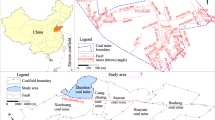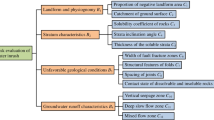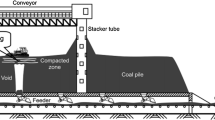Abstract
With the increasing development of underwater equipment, electrical fire has become the focus of safety concern. To effectively guide the fire engineering design and incident management, this research proposes a priority assessment method for the electrical fire risks in typical Chinese underwater equipment cabins, which integrates the fault tree, modified analytic hierarchy process (MAHP), B-RISK fire zone model and Borda number ranking. Firstly, the method uses the fault tree to identify the fire sources (origins) and MAHP involving the numbers of accidents and regulations and the failure rate to quantify the fire occurrence possibility. Secondly, the B-RISK model is used to predict and rank the fire severities induced by fire spread. Finally, a priority ranking of fire risk is achieved using the Borda number combining fire occurrence possibility and fire severity. The case study on a typical underwater power station show that the fire occurrence possibility obtained by MAHP is highly consistent with the result of traditional AHP. The B-RISK simulations can identify the fire spread paths and thus the causes of fire expansion. The rankings of fire occurrence possibility and fire severity do not consistent with each other therefore the Borda number can better evaluate the priority of fire risks which builds the foundations for potential fire engineering assessment and design.











Similar content being viewed by others
References
Zhang SK, Bai Y, Tang WY (2003) Ship and ocean engineering risk assessment. National Defense Industry Press, Bei**g (in Chinese)
Yang LX (2012) Talking about the fire accident of nuclear submarine. Mod Ship J 000(018):29–32 (in Chinese)
**e GX, Lin FC, Huang HB (2008) Causes, characteristics and preventive measures of electrical fire accidents on submarine. Collected Papers on Ship Anti-pollution Management (in Chinese)
Tran P, Nguyen QT, Lau KT (2018) Fire performance of polymer-based composites for maritime infrastructure. Composites 155:31–48. https://doi.org/10.1016/j.compositesb.2018.06.037
Proulx G (2008) SFPE handbook of fire protection engineering
Guan Y, Jie Z, Shi T, Zhu P (2016) Fault tree analysis of fire and explosion accidents for dual fuel (diesel/natural gas) ship engine rooms. J Mar Sci Appl 15:331–335. https://doi.org/10.1007/s11804-016-1366-6
Drmon R (2020) Probabilistic methods to assess the fire risk of an industrial building. Proc Manuf 46:543–548. https://doi.org/10.1016/j.promfg.2020.03.078
Wang YF, Qin T, Li B, Sun XF, Li YL (2017) Fire probability prediction of offshore platform based on Dynamic Bayesian Network. Ocean Eng 145:112–123. https://doi.org/10.1016/j.oceaneng.2017.08.035
Shi L, Shuai J, Xu K (2014) Fuzzy fault tree assessment based on modified AHP for fire and explosion accidents for steel oil storage tanks. J Hazard Mater 278:529–538. https://doi.org/10.1016/j.jhazmat.2014.06.034
Saaty TL (2013) Analytic hierarchy process: encyclopedia of biostatistics. Springer, Boston
Li SY, Tao G, Zhang LJ (2018) Fire risk assessment of high-rise buildings based on gray-FAHP mathematical model. Proc Eng 211:395–402. https://doi.org/10.1016/j.proeng.2017.12.028
Cai JJ (2011) Fuzzy comprehensive assessment of offshore oil-and-gas platform fire consequence severity. Fire Sci Technol 30(5):440–443 (in Chinese)
Lee, Sangick, Seo, Suwon, Chang, Daejun (2015) Fire risk comparison of fuel gas supply systems for LNG fuelled ships. J Nat Gas Sci Eng 27(3):1788–1795. https://doi.org/10.1016/j.jngse.2015.11.003
Hostikka S, Keski-Rahkonen O (2003) Probabilistic simulation of fire scenarios. Nucl Eng Des 224(3):301–311. https://doi.org/10.1016/S0029-5493(03)00106-7
Kang DI, Kim K, Jang SC, Yoo SY (2015) Risk assessment of main control board fire using fire dynamics simulator. Nucl Eng Des 289:195–207. https://doi.org/10.1016/j.nucengdes.2015.04.030
Cicione A, Wade C, Spearpoint M, Gibson L, Rush D (2020) A preliminary investigation to develop a semi-probabilistic model of informal settlement fire spread using B-RISK. Fire Saf J 120:103115. https://doi.org/10.1016/j.firesaf.2020.103115
**e S, Dong S, Chen Y, Peng Y, Li X (2021) A novel risk evaluation method for fire and explosion accidents in oil depots using bow-tie analysis and risk matrix analysis method based on cloud model theory. Reliab Eng Syst Saf 215:107791. https://doi.org/10.1016/j.ress.2021.107791
Ni H, An C, Ning C (2010) Some extensions on risk matrix approach. Saf Sci 48(10):1269–1278. https://doi.org/10.1016/j.ssci.2010.04.005
Bhardwaj U, Teixeira AP, Soares CG, Ariffin AK, Singh SS (2021) Evidence based risk analysis of Fire and Explosion accident scenarios in FPSOs. Reliab Eng Syst Saf 215:107904. https://doi.org/10.1016/j.ress.2021.107904
Maa B, Ank A, Mk B, Jptb C Determination of flood probability and prioritization of sub-watersheds: A comparison of game theory to machine learning. J Environ Manage 295:113040. https://doi.org/10.1016/j.jenvman.2021.113040
Reniers G, Sorensen K, Dullaert W (2012) A multi-attribute Systemic Risk Index for comparing and prioritizing chemical industrial areas. Reliab Eng Syst Saf 98(1):35–42. https://doi.org/10.1016/j.ress.2011.10.002
Nz A, Zhi ZA, Zra B, **g LA, Cheng ZC, Qz C (2018) Comprehensive risk assessment of high sulfur-containing gas well. J Pet Sci Eng 170:888–897. https://doi.org/10.1016/j.petrol.2018.07.016
Phibbs E, Kuwamoto SH (1974) Fault-tree Analysis. IEEE Trans Reliab R23(4):266–266
Wade C, Baker G, Frank K, Robbins A, Harrison R, Spearpoint M, Fleischmann C (2013) B-RISK user guide and technical manual. BRANZ study Report No 282. BRANZ, Judgeford, New Zealand
Tohir M, Spearpoint M (2013) Distribution analysis of the fire severity characteristics of single passenger road vehicles using heat release rate data. Fire Sci Rev 2(1):1–26. https://doi.org/10.1186/2193-0414-2-5
Sazegara S, Spearpoint M, Baker G (2017) Benchmarking the single item ignition prediction capability of B-RISK using furniture calorimeter and room-size experiments. Fire Technol 53(4):1485–1508. https://doi.org/10.1007/s10694-016-0642-y
National Military Standards of the People's Republic of China (GJB202A-98), General specification for distribution and control equipment for naval ships. Equipment Development Department of People's Republic of China Central Military Commission (in Chinese)
National Military Standards of the People's Republic of China (GJB1989-94), General specification for naval ships distribution box. Equipment Development Department of People's Republic of China Central Military Commission (in Chinese)
National Military Standards of the People's Republic of China (GJB13-1984), Naval ship electrical specifications. Equipment Development Department of People's Republic of China Central Military Commission (in Chinese)
National Military Standards of the People's Republic of China (GJB3952-2000), General requirements for electrical safety of naval ships. Equipment Development Department of People's Republic of China Central Military Commission (in Chinese)
National Military Standards of the People's Republic of China (GJB5B-2014), General specification for low-voltage apparatus in naval ships. Equipment Development Department of People's Republic of China Central Military Commission (in Chinese)
National Military Standards of the People's Republic of China (GJB2732-96), General Specification for naval ships hydraulic equipment. Equipment Development Department of People's Republic of China Central Military Commission (in Chinese)
Walters RN, Hackett SM, & Lyon RE (2000) Heats of combustion of high temperature polymers. Fire Mater 24(5):245–252. https://doi.org/10.1002/1099-1018(200009/10)24:53.0.CO;2-7
Mark JE (2007) Physical properties of polymers handbook. Springer, New York
Bai XY, Wang QW, Sui SJ, & Zhang CS (2011) The effects of wood-flour on combustion and thermal degradation behaviors of pvc in wood-flour/poly(vinyl chloride) composites - sciencedirect. J Anal Appl Pyrol 91(1):34–39. https://doi.org/10.1016/j.jaap.2011.02.009
US NRC/EPRI, EPRI/NRC-RES Fire PRA (2005) Methodology for Nuclear Power Facilities, NUREG/CR-6850, EPRI 1011989
Acknowledgements
This work was supported by the National Natural Science Foundation of China (NSFC) under Grant No. 51876148.
Author information
Authors and Affiliations
Corresponding authors
Additional information
Publisher's Note
Springer Nature remains neutral with regard to jurisdictional claims in published maps and institutional affiliations.
Supplementary Information
Below is the link to the electronic supplementary material.
Rights and permissions
About this article
Cite this article
Nan, S., Li, K., Li, P. et al. A Novel Method for Priority Assessment of Electrical Fire Risk in Typical Underwater Equipment Cabins in China. Fire Technol 58, 2441–2462 (2022). https://doi.org/10.1007/s10694-022-01252-z
Received:
Accepted:
Published:
Issue Date:
DOI: https://doi.org/10.1007/s10694-022-01252-z




